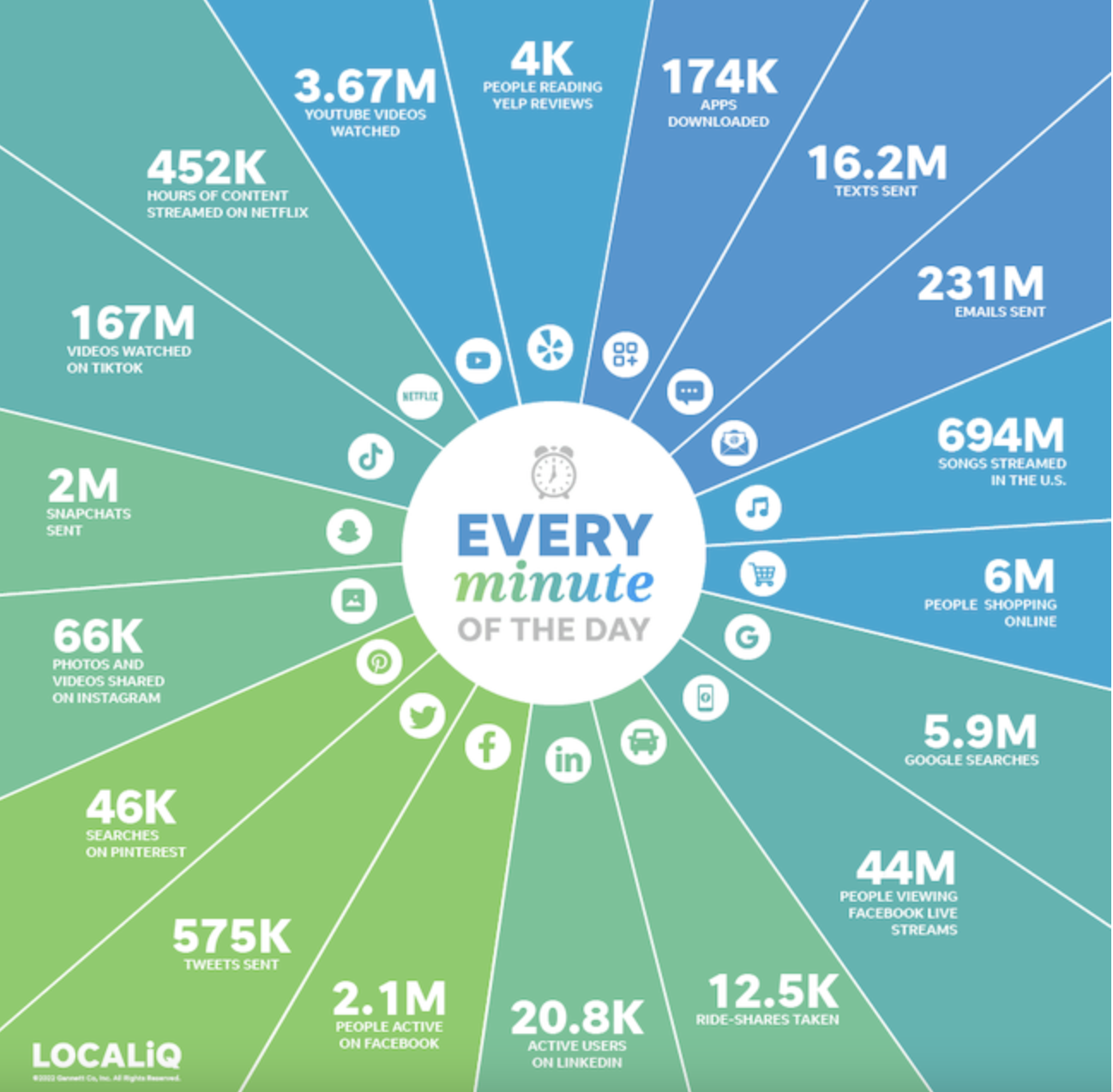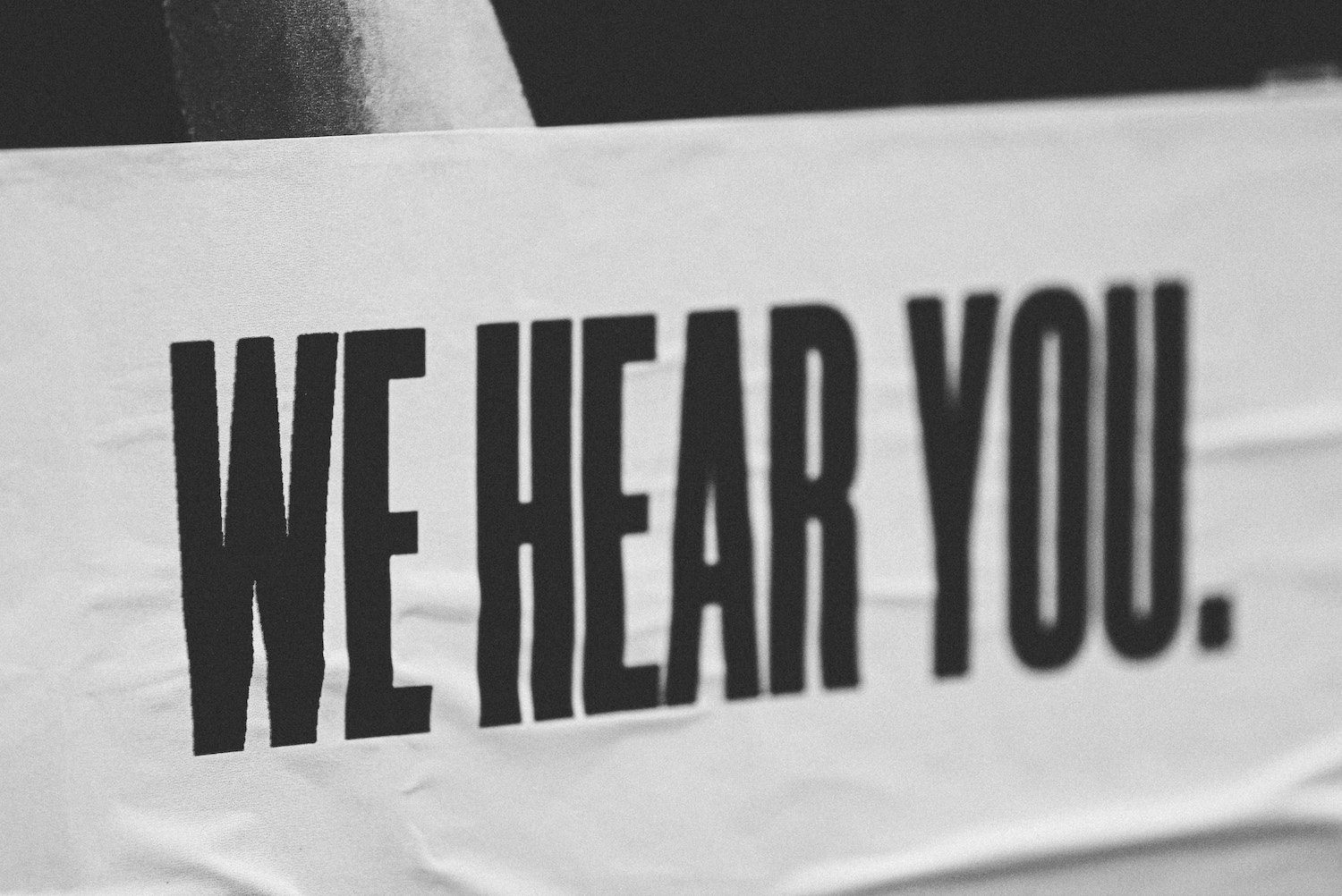Information travels fast on social media.
And there’s a lot of it, especially with nearly half the world’s population on social media.
In fact, in an internet minute*, there are:
- 3.67 million YouTube videos watched;
- 575,000 Tweets sent;
- 66,000 Instagram photos shared;
- 2 million Snapchat texts read; and
- 167 million TikTok videos seen.
 Source: LOCALiQ: https://localiq.com/blog/what-happens-in-an-internet-minute/
Source: LOCALiQ: https://localiq.com/blog/what-happens-in-an-internet-minute/
That’s a lot of conversations, and also a lot of noise.
So in a day, or a week, how many times is your school mentioned? There’s an easy way to find out, with social media listening.
We know higher education has a social media audience far more active than most industries, and savvy higher education marketers are using social media listening to gain an advantage in marketing their schools.
With social media listening, universities and colleges can:
- find relevant conversations taking place around and about you on both social and online media (in real time)
- evaluate the tone of those conversations
- gain valuable awareness about your audiences
- monitor what’s being said about other schools
- aggregate data to get the bigger picture
- get ahead on trends
- gain feedback and listen to what your community has to say about you.
It’s a great way to manage your online reputation, but also to interact with your audiences and communities.
Use social media listening to level up your marketing strategy
Social media listening is an important part of your marketing strategy.
It can offer actionable insight into trends and student expectations, allow you to share or repurpose positive student-generated content, identify micro/nano-influencers and champions, respond to issues or complaints, and even engage directly with potential students.
You can also use social media listening for other purposes, such as monitoring your reputation in the media, blogs, and forums. If you know the questions, concerns, and topics being discussed, you can jump in on the conversation.

It can also be a very useful tool in your crisis communications plan, delivering real-time information and also tracking positive, neutral, and negative mentions of your institution before, during, and after a crisis.
For savvy marketers, social media listening is also the key to successful newsjacking—linking content to news or trends in real time, where timing is critical.
Here's our take on getting started with social media listening:
1. Determine goals and which channels you want to focus on
After choosing from the many vendors offering social media listening tools, it’s time to determine what your goals are and choose data sources.
Social media listening will allow you to get insights into what prospective and current students think of your school, but will also help you determine what kind of content would reach your audiences, and inform your marketing strategy.
You may have to be selective in the platforms you choose to monitor to avoid becoming saturated with data. We recommend monitoring not just the social media channels you’re active on, but also the channels your students are on.
A big part of setting up your social media listening tool is figuring out where people are having conversations about you. You may find that most of the chatter is coming from a platform that’s not the one you usually advertise on, which may inform your next campaign.
Set up keywords or phrases to watch for, including hashtags and mentions, and then over time refine them by using logic (and/or) and exclusion keywords to ensure your results are more accurate.
Consider also monitoring spelling variants of your keywords and hashtags.
Additionally, you may want to set up filters, initially only looking at conversations in the US, for example, before looking are more global sentiments.
Results may surface good intelligence from the data that you can use to create new content that leverages this information.
Picking up on trends will also help you reposition your messaging, and get in on conversations while it’s relevant.
2. Monitor sentiment and engage with students
Social sentiment analysis is a key part of social media listening, and a highly useful tool for higher education.
Sentiment allows you to understand what the perception is about your higher education institution and whether (over time) it’s trending up or down. The social media listening tool will give you the bigger picture on the tone of the conversations that mention your school.
You’ll not only be able to see how your audiences react or feel about your institution, but you’ll also be able to drill down into more valuable data. For example, it could be that audiences on Facebook are having very different conversations about higher education than on Snapchat or Twitter.

Once you’re monitoring the conversations about you on social media, you’ll be able to actively listen. That means that you can respond rather than passively monitor.
With active listening, you can reach out and make a connection with those audiences, directly or indirectly responding to questions, concerns, and convos.
That can be something as small as replying to a positive (or negative) comment from a student and answering questions from high school graduates looking at admissions forms to adjusting your content strategy to mitigate against potential crises or most common roadblocks.
For example, you may see similar questions being asked in conversations on social media about your admissions process, so perhaps an FAQ addressing this would be wise.
Sentiment can change over time. It may take some time before you can pick up on subtle signals that something is changing.
Reporting features of social media listening are useful, especially if they’re shared internally. If you’re finding positive or negative mentions of your school, it’s an opportunity to remedy situations, but only if it’s shared with other university teams to improve processes.
3. See what’s working with other colleges and universities
It’s easy to focus on your own messaging, but it’s always useful to see what the competition is doing, and there’s a wealth of intelligence to be had from social media.
Find out what platforms they’re most popular, what posts resonate with students, and how frequently they post or engage with students.
You can check out the top universities and colleges in your area by setting up keywords, hashtags, and phrases to monitor, and use this insight to inform your own campaigns and content.
This will also allow you to see where other colleges and universities have gone wrong and avoid their mistakes.
4. See how your campaigns and events are doing
Higher education is seasonal, and you can use social media listening to better prepare campaigns around these busy periods, when audience sentiment can quickly change.
For example, graduation may see a flurry of positive mentions on social media, while exam or acceptance periods may alter that sentiment temporarily.
Social media listening can also inform you on the success of your campaigns and events, by aggregating information into easy-to-digest reports. For example, you can get general sentiment about events, conferences and campaigns, by tracking impressions and engagements from posts, seeing demographics of who’s mentioned your campaigns, and seeing which themes are resonating.
These metrics can be broken down also by platform, content type, demographic, sentiment, and more, depending on your tool. With the cookieless future around the corner, these statistics will be increasingly important.
5. Discover your micro-influencers
Influencer marketing on campus is exploding, and social media listening can help you identify micro-influencers whom you can partner with to promote your school through videos, account takeovers, and ambassador programs.

Bigger isn't always better. No longer the private domain of celebrities with millions of followers, micro-influencers have a smaller number of followers but they usually have higher levels of engagement. Gen-Z students can relate to these enthusiastic champions of your universities who live and study among them.
Using social media listening, you can identify influential students and alumni and reach out to them, and recruit them for future content and campaigns.
Recruiting micro-influencers, students who have their own network of followers, or, in the case of alumni, a potentially large pool of professional contacts (e.g. on LinkedIn), can help build your higher education institution's reputation to new audiences entirely.
Have you been using social media listening at your school? Share your tips on social media or in the comments below.
 |
 |
 |
|---|

:format()//media/social-media-listening-in-higher-education-RQ.png)